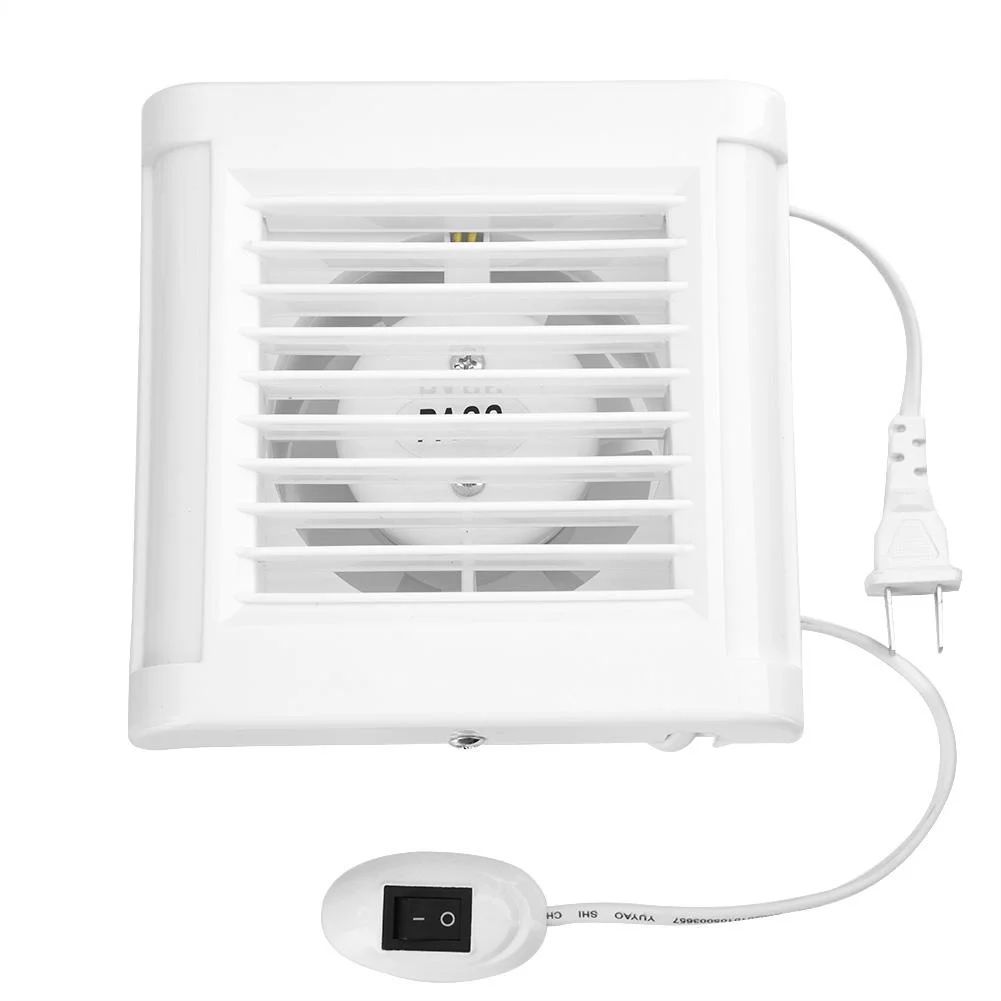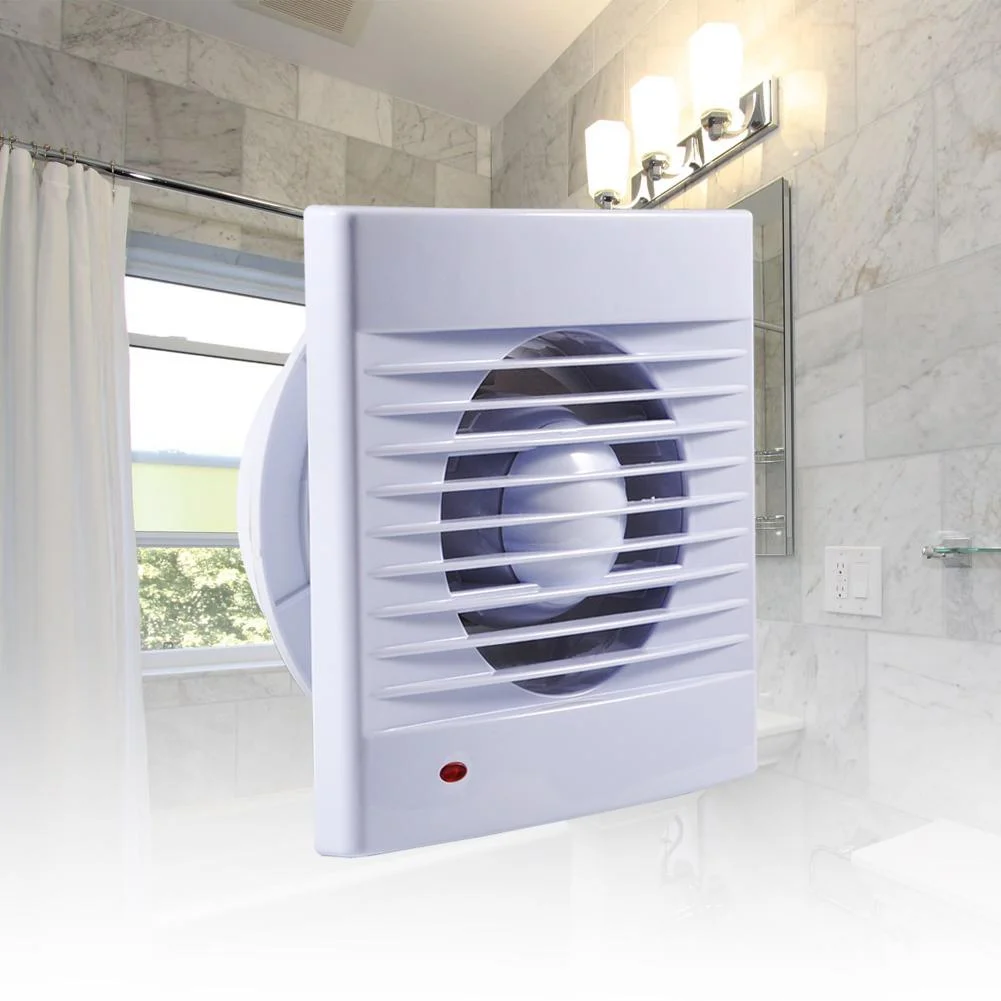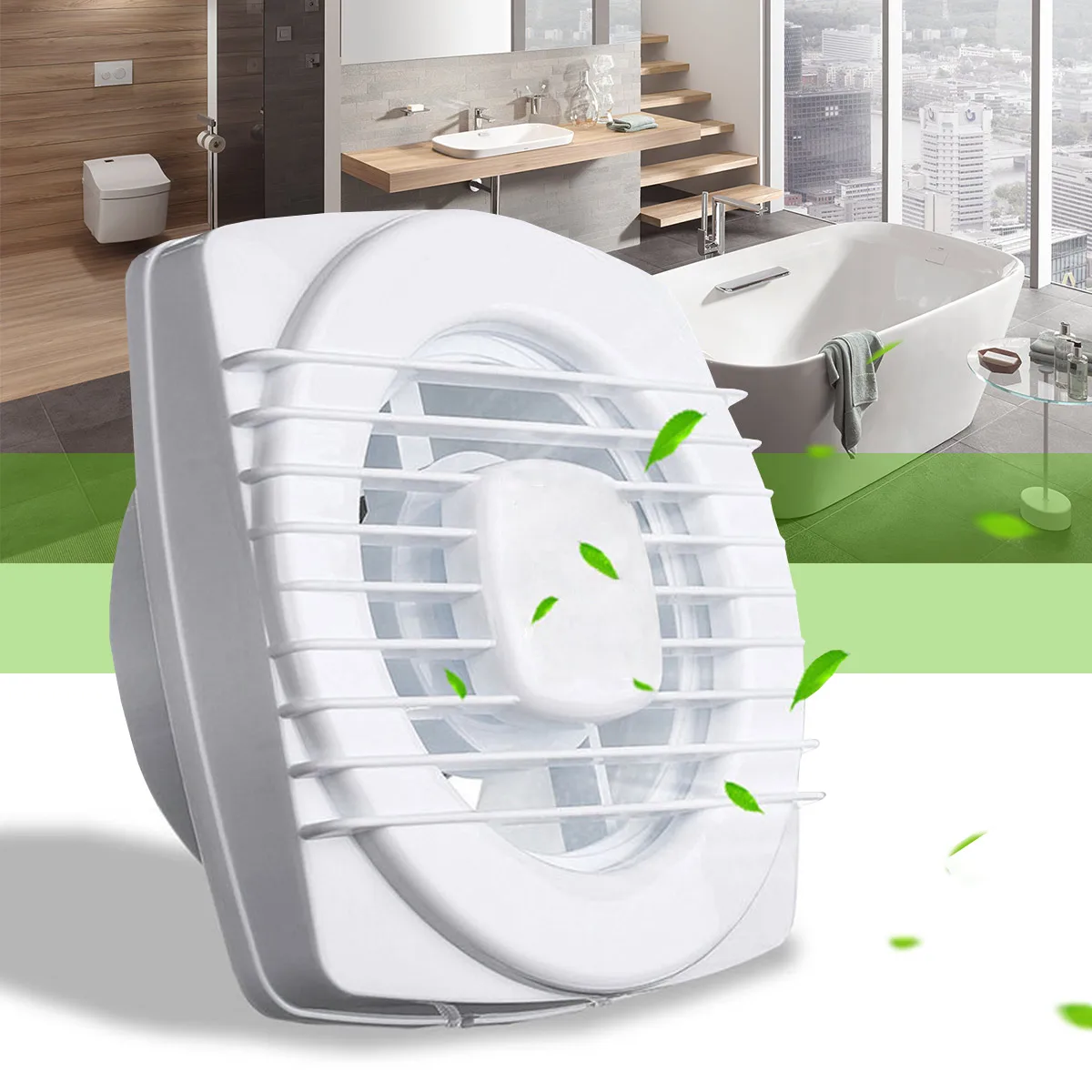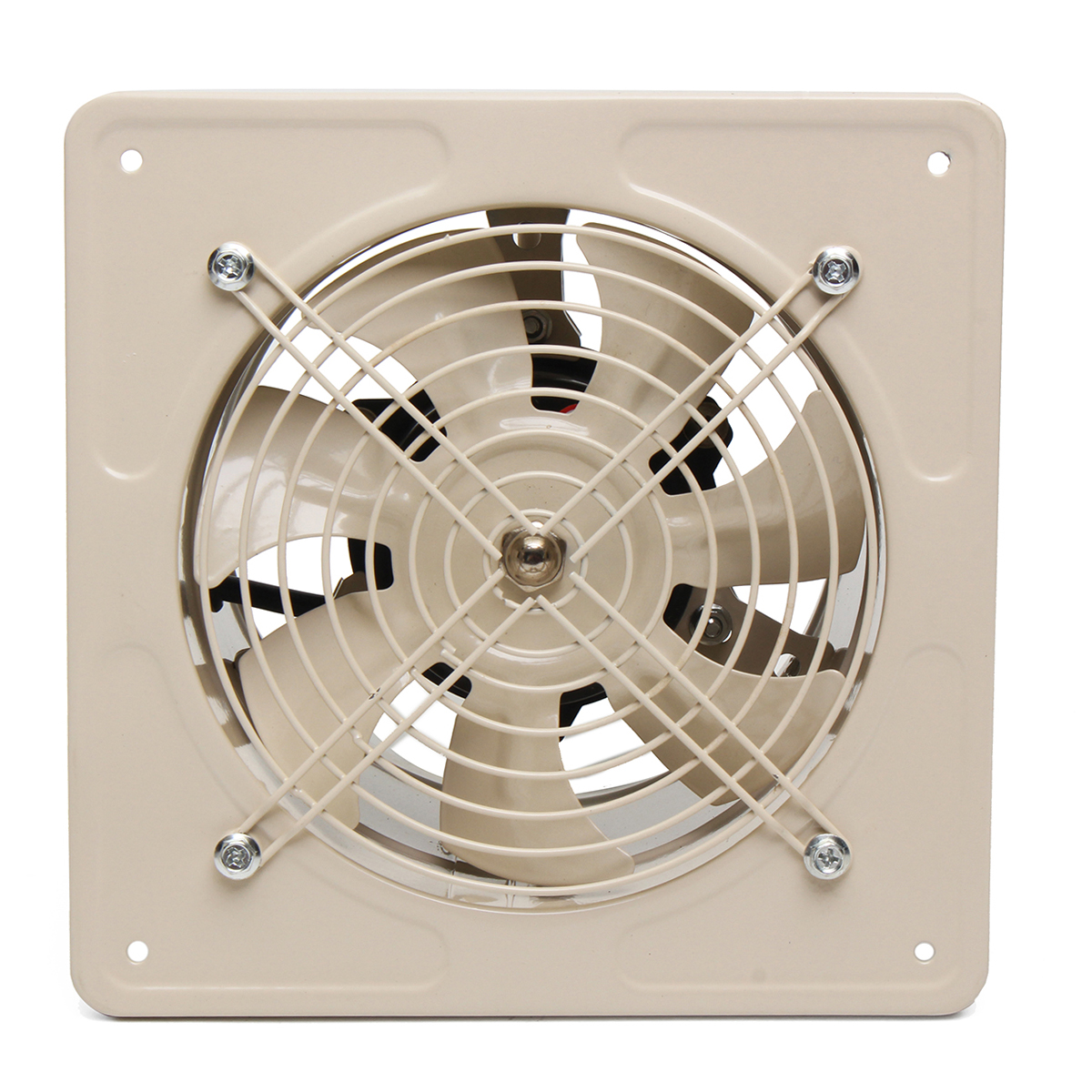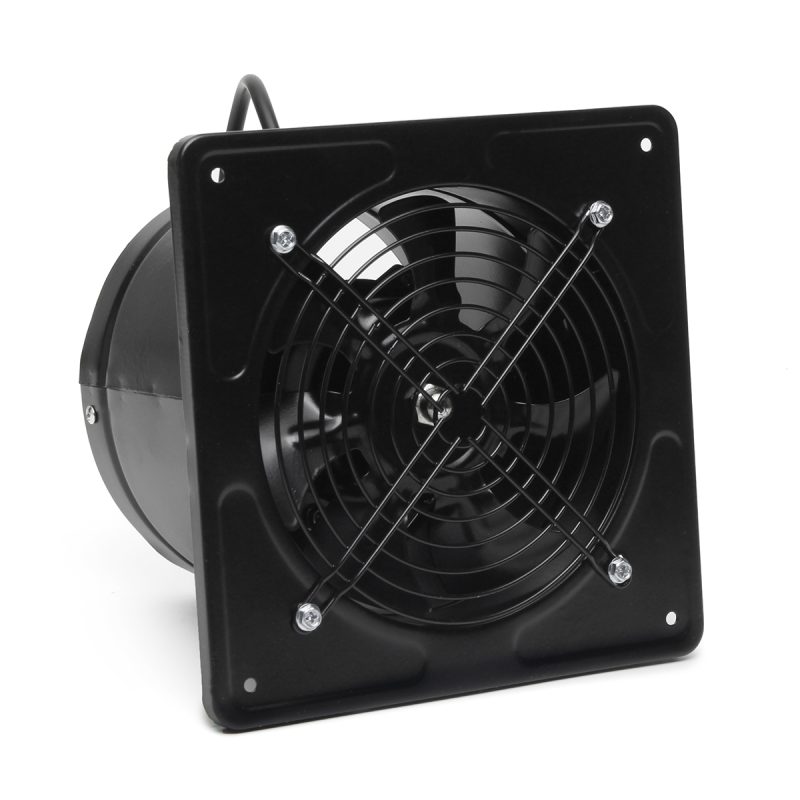
Maintaining air quality in our homes is essential for health and comfort, especially in areas like bathrooms that are prone to humidity, mold, and unpleasant odors. One effective solution to this problem is installing a bathroom window exhaust fan. This article aims to explore the various aspects of bathroom window exhaust fans, including their benefits, features, installation processes, maintenance, and energy efficiency.
Understanding Bathroom Window Exhaust Fans
What is a Bathroom Window Exhaust Fan?
A bathroom window exhaust fan is a specially designed ventilation device that helps remove excess moisture, odors, and airborne particles from bathroom spaces. Unlike traditional ceiling-mounted exhaust fans, these fans are designed to be installed in a window frame, enabling them to expel stale air directly outside. This feature is particularly beneficial in homes that do not have adequate ductwork.
How Does It Work?
A bathroom window exhaust fan operates by drawing in air from the bathroom and expelling it outside. This process helps to create a continuous air exchange, effectively reducing humidity levels and improving air quality. Most window exhaust fans come with a built-in motor, which powers the fan blades to circulate the air efficiently. Many also include adjustable speed settings, allowing users to control the airflow according to their needs.
Benefits of Installing a Bathroom Window Exhaust Fan
1. Reducing Humidity Levels
High humidity levels in bathrooms can lead to the growth of mold and mildew, which can compromise indoor air quality and pose health risks. A bathroom window exhaust fan helps in reducing humidity levels by expelling the moist air outside, especially during and after showers or baths.
2. Eliminating Unpleasant Odors
Bathrooms can quickly become a source of unpleasant odors, which can be uncomfortable for residents and guests alike. A bathroom window exhaust fan helps to eliminate these odors by improving ventilation and ensuring that stale air is replaced with fresh air from outside.
3. Preventing Structural Damage
Excess moisture can cause significant structural damage to your home, such as peeling paint, warped wood, and compromised insulation. By reducing humidity, a window exhaust fan helps to protect your home from these issues, ultimately saving you money on repairs.
4. Improving Indoor Air Quality
A well-ventilated bathroom is crucial for maintaining good indoor air quality. A bathroom window exhaust fan helps to reduce airborne contaminants, including allergens, dust, and volatile organic compounds (VOCs), contributing to a healthier living environment.
5. Energy Efficiency
Many modern bathroom window exhaust fans are designed to be energy-efficient. By replacing the moist air with drier air from outside, these fans can help reduce the workload on your home’s heating and cooling systems, resulting in lower energy bills.
Features to Look for in a Bathroom Window Exhaust Fan
1. Noise Level
One important factor to consider when choosing a bathroom window exhaust fan is its noise level. Look for fans that operate quietly, especially if you have a multi-user household. Many manufacturers provide decibel ratings to help you gauge how loud the fan will be during operation.
2. Size and Fit
The size of the fan is crucial for effective ventilation. Ensure that the fan fits your window frame properly and can efficiently circulate the air in your bathroom. Most manufacturers provide measurements for the fan’s dimensions.
3. Speed Settings
Having adjustable speed settings allows you to customize the airflow based on your needs. Some models also come with automatic timers that allow you to set how long the fan will run after you leave the bathroom.
4. Built-in Humidistat
A built-in humidistat sensors humidity levels and activates the fan automatically when needed. This feature ensures that the fan only operates when necessary, saving energy and minimizing wear on the motor.
5. Safety Features
Always check for safety features such as thermal protection and a robust design. Fans that can withstand moisture and humidity are less likely to require frequent replacements.
Installation Process
1. Assessing the Bathroom
Before installing a bathroom window exhaust fan, assess the layout and size of your bathroom. Measure the window to confirm that you purchase a fan that fits properly. Consider the location of the fan; it should ideally be positioned near sources of moisture, such as the shower or bathtub.
2. Gathering Supplies
You will need various tools and materials for the installation, including a screwdriver, a level, mounting brackets, screws, and possibly a power drill. Most fan kits will come with installation instructions and necessary hardware.
3. Removing the Existing Window (if applicable)
If you’re replacing an existing window with a fan, carefully remove the old window without damaging the surrounding structure.
4. Installing the Fan
Follow the manufacturer’s instructions for installing the fan in the window frame. Ensure that it is securely mounted and fitted properly. Use the level to check that the fan is aligned straight, as an uneven installation can affect performance.
5. Connecting Power
If your fan requires electrical power, connect the fan to your home’s electrical system. This may require consulting an electrician, especially if you are not experienced with electrical work. Always prioritize safety and adhere to local building codes.
6. Testing the Fan
Once installed, test the fan to ensure it operates correctly and efficiently. Check for any odd noises or vibrations that may indicate an installation problem.
Maintaining Your Bathroom Window Exhaust Fan
1. Regular Cleaning
To keep your bathroom window exhaust fan functioning well, it’s essential to clean both the fan blades and the surrounding area regularly. Dust and grime can accumulate over time, reducing the fan’s effectiveness. Cleaning should be done at least twice a year.
2. Checking the Motor
The motor should be checked periodically for any signs of wear or malfunction. If the fan is producing unusual noises, it may indicate that the motor is failing and requires replacement.
3. Lubrication
Some fans may benefit from occasional lubrication of the motor and moving parts. Refer to the manufacturer’s instructions for guidance on this process.
4. Inspecting the Electrical Connections
Regularly inspect the electrical connections to ensure that there are no loose wires or signs of damage. If you notice anything unusual, contact a professional for assistance.
5. Looking for Signs of Wear
Keep an eye out for signs of wear and tear, such as frayed wires or damaged fan blades. Addressing these issues promptly can prevent more significant problems down the line.
Choosing the Right Size Fan for Your Bathroom
1. Calculate the Bathroom Volume
The first step in selecting the right size fan is to calculate the volume of your bathroom. Measure the length, width, and height of the room and multiply these numbers together.
2. Determine Required CFM
CFM, or cubic feet per minute, indicates how much air the fan can move. As a general guideline, you should aim for a fan that can provide 1 CFM per square foot of bathroom space. If your bathroom experiences extra humidity (for instance, a frequent user), consider a fan with higher CFM ratings.
3. Consult Manufacturer Guidelines
Most manufacturers provide guidelines for the suitable size and CFM ratings for their models. Always refer to these recommendations when choosing the fan.
Types of Bathroom Exhaust Fans
1. Wall-Mounted Exhaust Fans
Wall-mounted exhaust fans are installed directly on the bathroom wall and expel air outside. They are easy to install and can be a cost-effective solution.
2. Ceiling-Mounted Exhaust Fans
These fans are usually installed in the bathroom ceiling and vent air out through ducts. They are more discreet and often more powerful than wall-mounted options, making them suitable for larger bathrooms.
3. Window Exhaust Fans
Window exhaust fans are specifically designed to fit into a window frame. They offer a unique advantage since they can easily be removed or adjusted based on your requirements.
 Energy-Efficient Choices
Energy-Efficient Choices
1. Look for ENERGY STAR Ratings
When selecting a bathroom window exhaust fan, look for models with ENERGY STAR ratings. These fans meet strict energy efficiency guidelines set by the Environmental Protection Agency and can save you money on your utility bills.
2. Utilize Automatic Controls
Fans equipped with automatic controls or humidity sensors are energy-efficient options. They operate only when needed, minimizing electricity use.
3. Consider Dual-Purpose Units
Some models also serve as heaters. Dual-purpose fans can provide warmth during colder months while continuing to serve as exhaust fans.
Conclusion: Why a Bathroom Window Exhaust Fan is Essential
Investing in a bathroom window exhaust fan is a smart choice for homeowners who want to improve air quality, reduce humidity, and eliminate unpleasant odors. With numerous benefits, from preventing structural damage to enhancing indoor air quality, a well-selected and properly maintained bathroom window exhaust fan can significantly contribute to your home’s overall health and comfort. Whether you opt for a basic model or a more advanced version with multiple features, the right exhaust fan can make a world of difference in your bathroom environment. Don’t overlook this essential component of your home—make the choice for efficiency, comfort, and better air quality today with a bathroom window exhaust fan.
